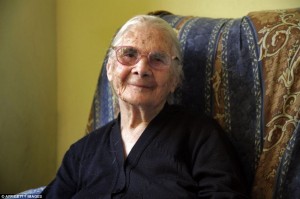Longevity Tourism
Yes, it’s a thing.
And no, it should NOT be a thing. Let me explain:
“Longevity tourism” involves well-heeled, first-worlders visiting Blue Zones like the little village in southern Italy that I wrote about here. Blue Zones are geographic locations where people live significantly longer, astoundingly healthier lives than the rest of us. In addition to the little villages on the southern Mediterranean coast of Italy, there is Sardinia, the Nicoya Peninsula of Costa Rica and the Greek island of Icaria, among others.
In the emerging business of Longevity Tourism – part of (shoot me now) the “silver economy,” (i.e. moneyed babyboomers), travelers venture to these places on quests to discover the secrets to living long, healthy lives. If you read this blog (and my book Counterclockwise), you know that I am all about living a healthy, vital life. But does Longevity Tourism hold the key?
Come with me as we travel to the sunbeaten village of Perdasdefogu, in the rugged interior of Sardinia, to meet the Melis family, Guinness World Record holders (2012-1014) for “oldest family on the planet.” Consolata (that’s her picture above) lived to 107. Her younger siblings include Claudina (103), Maria (101), Antonio (97), Concetta (95), Adolpho (93) and Vitalio (90).
What’s their secret?
They live, fully integrated, in the multi-generational life of their extended family.
They live, fully integrated, in the life of the village — an isolated, close-knit, sociably community, the same one they were born into.
They live in a culture that expressly treats the elderly with dignity and respect – and doesn’t make a big deal about it.
Families in this area carry a specific gene on their Y chromosome that significantly reduces the risk of heart attack and stroke. The gene pool is “unusually undiluted” because of the isolation of the villages and the family intermarriages.
They are poor. They grew up (and continue to live) hardscrabble lives. The men were goatherders, traversing miles of rugged terrain every day, living almost exclusively on goats’ milk and pistoccu (a thin, crisp local bread). “There was no money,” one nonagenarian explains. “It was difficult to get enough to eat.” Another villager adds, “You exchanged some of your cheese for a bit of bread. If you were having a good month, you got a little meat.”
These are not the “secrets” longevity tourists want to hear.
I’m thinking that we who care about health and wellness should leave these villagers to live their lives while we focus on creating a meaningful, engaged, multigenerational culture, one that we continue to respond to, actively participate in and enhance as we age.
How about that secret?







4 comments
We spend a great deal of time and effort to seperate ourselves from our families, to seek out independence and identity. As a young man, I couldn’t get away from home or my parents/sibling fast enough. Flash forward 20 years and I regret the time I lost seeking that elusive “freedom.” I never thought of it as a health benefit, thank you for sharing.
I think it’s a rite of passage to venture out in search of a separate identity. It also makes returning purposeful and meaningful. So perhaps you’ve got it good both ways!
One of my children, son, daughter-in-law and three grandchildren live one block from us. We all agree that all our lives are enriched by the proximity. We participate in the daily lives of our grandchildren and we see them almost every day. It is our own small multi-generational culture and we are all the better for it.
Yes! This is a great start. From our generation’s perspective, we have to make our older lives enmeshed and engaged in our communities, not segregated in GATED communities of retirees!
Leave a Comment